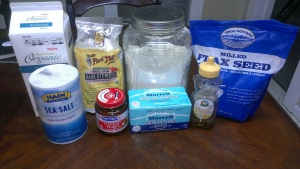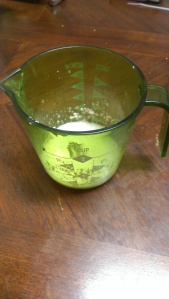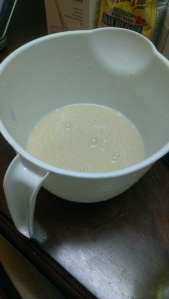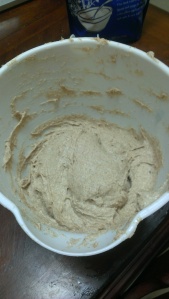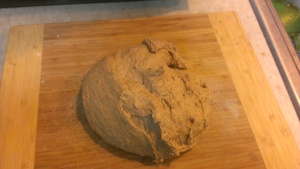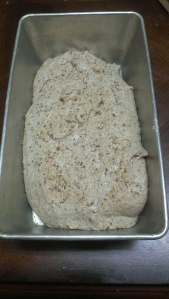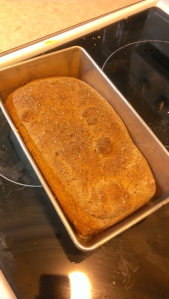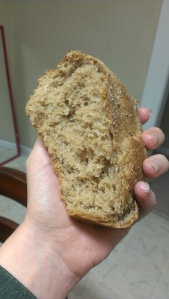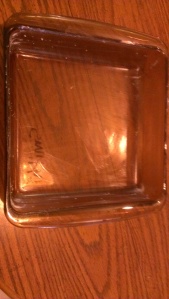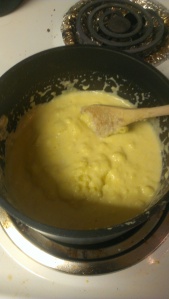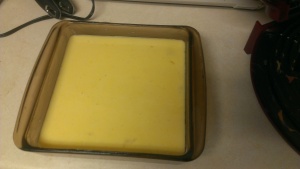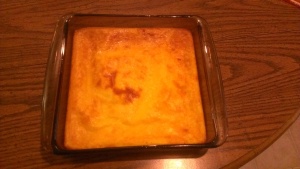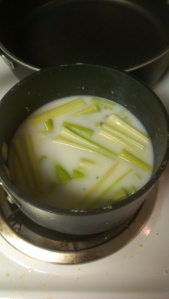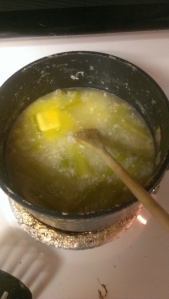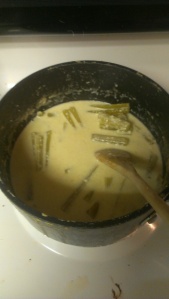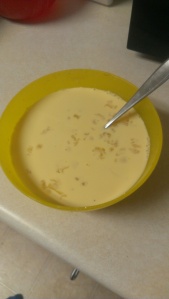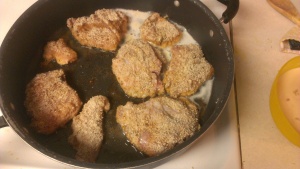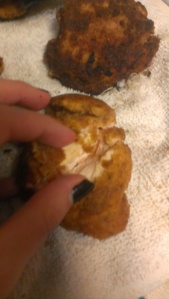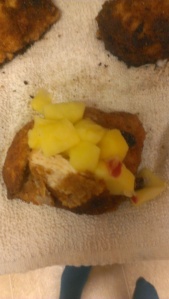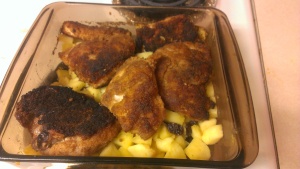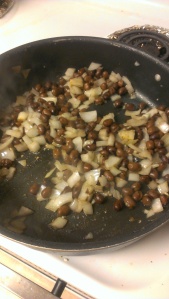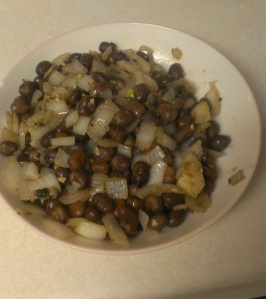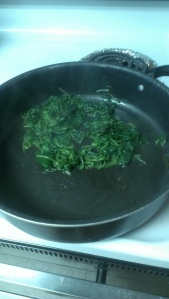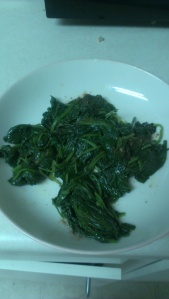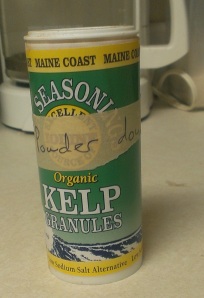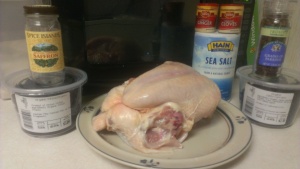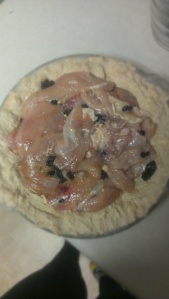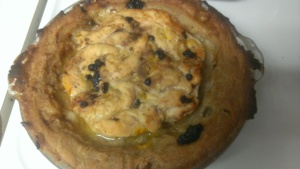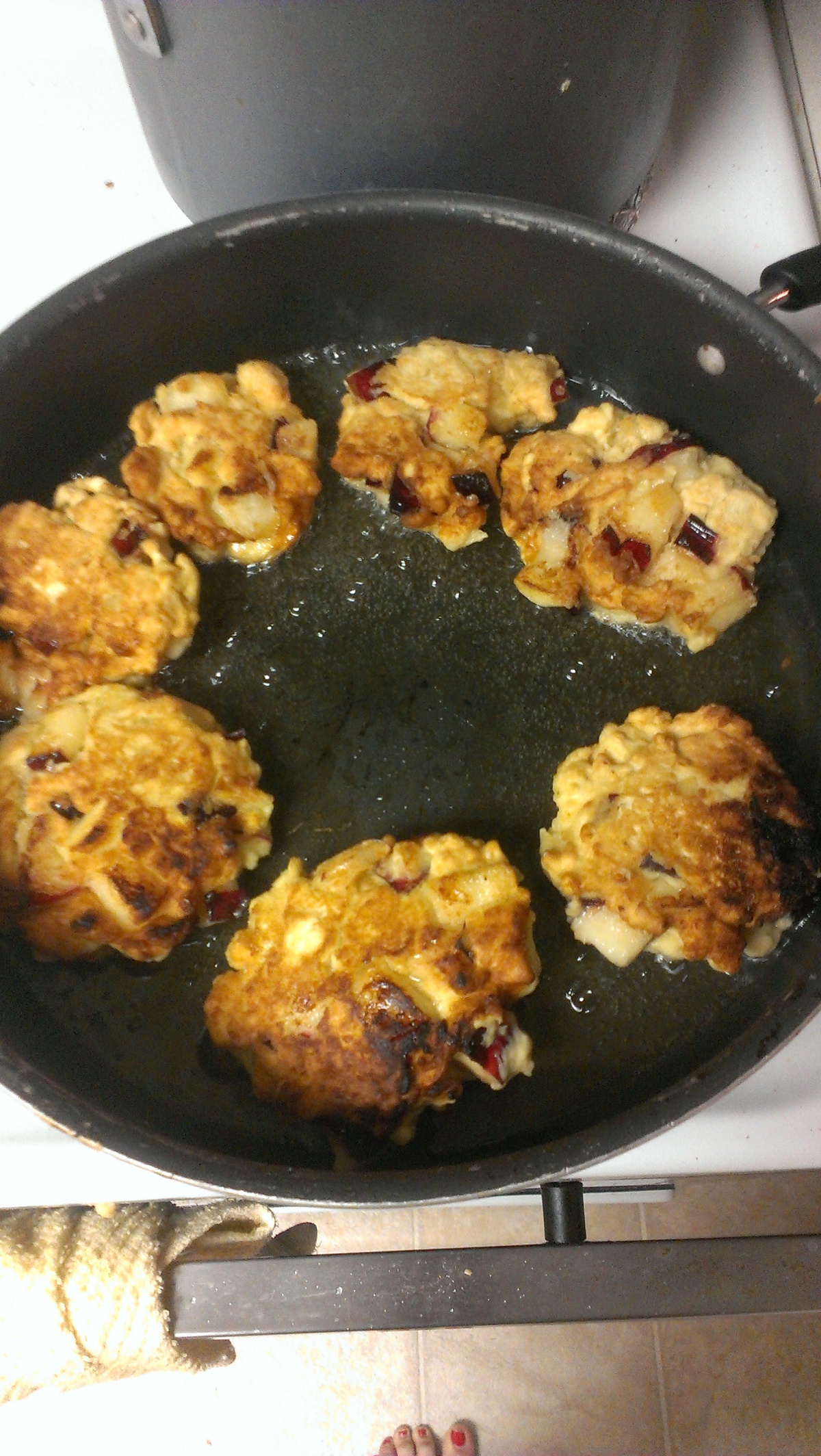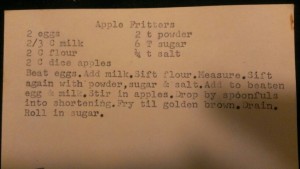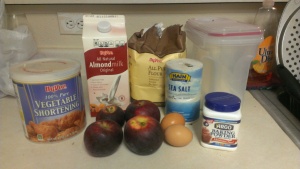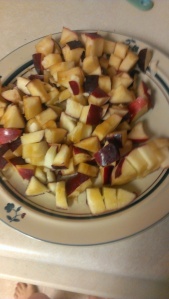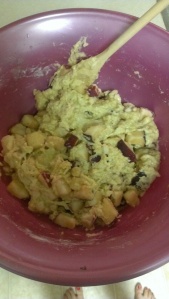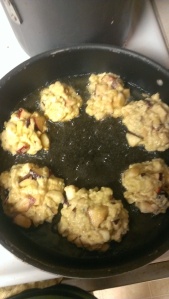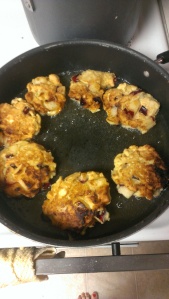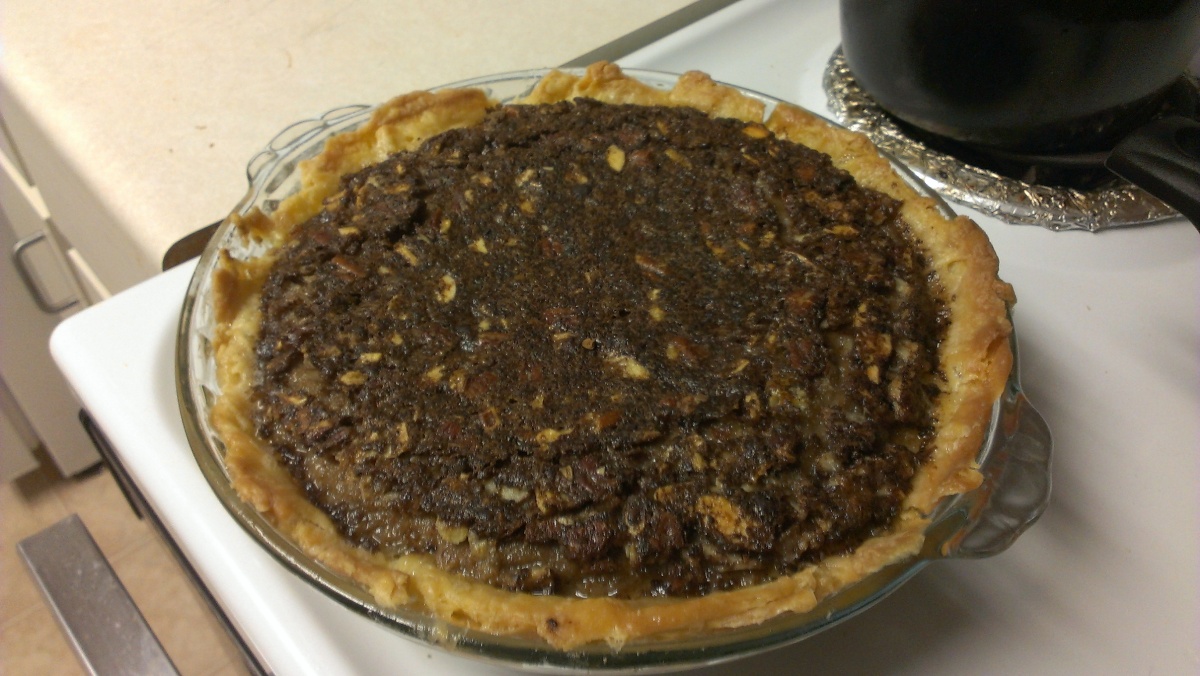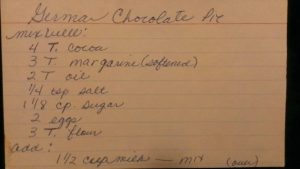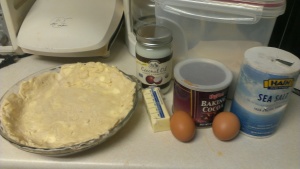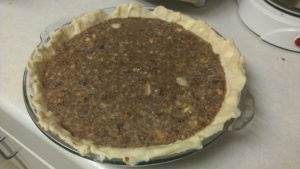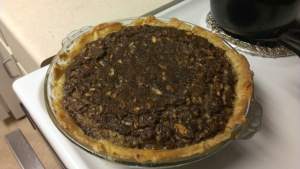I haven’t made done a new recipe in awhile. I’ve been extremely busy finally getting my act together so fun stuff like cooking and writing has fallen to the wayside. However, this weekend I found time to make a rye bread like the Vikings would have made.
Bread was the staple food for the Vikings, and a meal rarely passed without it. The most common grain used for bread was barley, although rye, oats, and wheat were also used extensively. When times were lean, ground acorns or peas were added to the bread to stretch it out. This would have given it a very course, hard texture that wore down the teeth over time. Grains were the most important and abundant source of food for the Vikings, however they were not only for bread. Ale was consumed at most meals by everyone of all ages. It would have been a thicker, less alcoholic brew than we are used to drinking today, and was actually quite nutritious.
The Vikings did not write cookbooks. The earliest cookbooks from Scandinavia come from the 14th century. However, we can use other written and archeological records to figure out what they ate. Scandinavian sagas included some details about meals, and archeologists have studied the Vikings garbage and poop extensively. We can also trace their culinary traditions through other cuisine found in the parts of Europe that they colonized. Scottish food seems to closely resemble Viking cuisine, and is the most directly related.
The Vikings ate about two main meals a day, once in the morning after the days work had started, and again at the end of the day’s work. They relied heavily on livestock and supplemented with wild game and fishing. Interestingly, beached whales were a highly valued food source in Scandinavia. Fish was salted and preserved for the winter, and produce was eaten in season and preserved by drying for winter. Much of the fruits and vegetables consumed by the Vikings were wild. They rarely drank milk but made it into various dairy products.
I followed this recipe: http://cookit.e2bn.org/historycookbook/963-rigen-hlaf-rye-bread.html
This is a great website with tons of simple, authentic recipes from bygone eras. The only issue I have with it is the measurements, since it’s a UK based website. So here, I’ve re-written the recipe with star-spangled measurements:
2 1/2 tsp dry active yeast
1/4 cup warm water
2 tbs runny honey
1 1/2 tsp salt
1 cup water
2 tbs lard
2/3 cup whole wheat flour
1/2 cup rye flour, plus any more you may need if the dough is too wet (55 g rye flour is actually a little less than 1/2 cup, but I ended up needing to add a lot more flour than the recipe called for, so you would actually end up using more than 1/2 cup)
1 2/3 cup all-purpose flour
1/2 tsp flax or poppy seeds
2 tbs milk
I don’t have much experience with making bread, and I shy away from it because baking rarely seems to turn out well for me. I’ve made “Super Ridiculously Simple Dinner Biscuits” that turned out like hard tack, brownies with a gummy center, and tortillas that were oddly thick and crumbly. To be honest, I am not a very careful, precise, or patient chef. This is a real problem when baking, because exact measurements and seemingly small steps can make a huge difference in the quality of the final product. I’ve heard somewhere that cooking is an art, while baking is a science. I lack the exact precision and patience of a bread scientist, apparently.
First I had to get the yeast started by mixing it with warm water.
After letting it sit I mixed the wet ingredients.
I then mixed in the dry ingredients.
It was too wet and sticky still, so I added more rye flour. I let it rise.
I kneaded it, let it rise some more, flattened it a bit, let it rise more, and finally put it in the bread tin. I topped it with ground flax seed.
After baking, looks promising…
Success! It was soft and lovely. Slightly sweet and very yeasty, in a good way. I had it with some fondue I made in the crock pot, which was delicious but a little bit messy. The bread was so soft and kind of crumbly that it did not hold up well when dipped into the thick fondue, so now my fondue is full of little rye chunks. I suppose there are worse things.
Huzzah!
